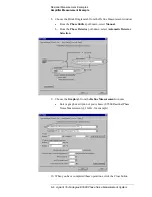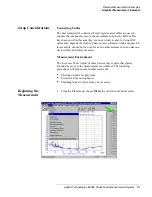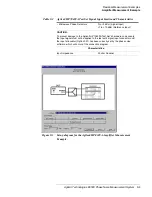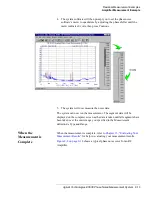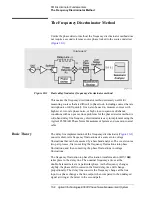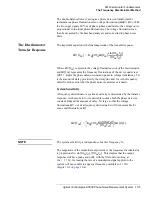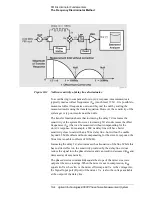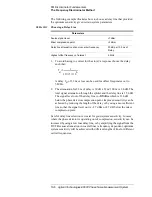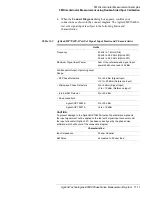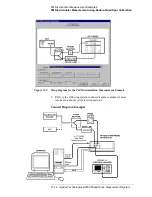
10-4
Agilent Technologies E5500 Phase Noise Measurement System
FM Discriminator Fundamentals
The Frequency Discriminator Method
Figure 10-2
Nulls in sensitivity of delay line discriminator.
To avoid having to compensate for sin (x)/x response, measurements are
typically made at offset frequencies (
) much less
. It is possible to
measure at offset frequencies out to and beyond the null by scaling the
measured results using the transfer equation. However, the sensitivity of the
system get very poor results near the nulls.
The transfer function shows that increasing the delay
increases the
sensitivity of the system. However, increasing
also decreases the offset
frequencies (
) that can be measured without compensating for the
sin(x)/x response. For example, a 200 ns delay line will have better
sensitivity close to carrier than a 50 ns delay line., but will not be usable
beyond 2.5 MHz offsets without compensating for the sin(x)/x response; the
50 ns line is usable to offsets of 10 MHz.
Increasing the delay
, also increases the attenuation of the line. While this
has no direct effect on the sensitivity provided by the delay line, it does
reduce the signal into the phase detector and can result in decreased
and
decreased system sensitivity.
The phase detector constant
equals the slope of the mixer sine wave
output at the zero crossings. When the mixer is not in compression,
equals
where
is the mixer efficiency and
is the voltage into
the Signal Input port (R port) of the mixer.
is also the voltage available
at the output of the delay line.
fm
1 2
τ
d
⁄
τ
d
τ
d
fm
τ
d
K
φ
K
φ
K
φ
K
L
V
R
K
L
V
R
V
R


